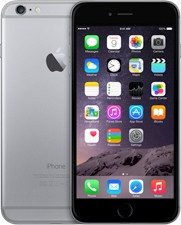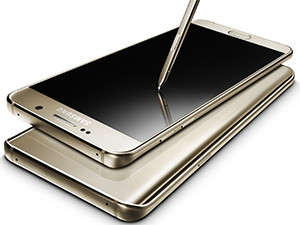
Operating system preference is the biggest factor for consumers when choosing a high-end smartphone, and this preference trumps style.
The iPhone 6S Plus went on sale this morning in South Africa and the Samsung Note 5 was launched locally last week.
Last night, over a hundred eager local Apple enthusiasts stayed up until midnight at MTN's headquarters so they could be the first to own the gadget.
"I think the two devices are going to be equally desirable to consumers, even in SA where Apple has tended to lag behind Samsung in the smartphone stakes overall," says Brian Neilson, director at research firm BMI-TechKnowledge.
"Apple has shown resurgence in popularity in SA since the launch of the iPhone 6 and derivatives."
When it comes to selecting a handset, South African consumers will look at the operating system, storage space and data connectivity, before considering screen size. This is according to data from BMI-TechKnowledge's recently-released SA Consumer Digital Lifestyle Research Programme, for which 1 500 people in metropolitan areas were surveyed.
Neilson says many consumers will choose between the Apple and Samsung products based mainly on their preference for Android or iOS.

Only after these four things have been taken into account, will the consumer look at the handset brand. Factors they look at thereafter are how fast the phone and apps work on the device and the camera functionality. In tenth position is style - how the phone looks.
"It is interesting how far down the list 'style' appears - style was always a major differentiator associated with Apple products, although other smartphone brands have caught up, and it generally boils down to personal preference, even with regard to which brand has the best style," says Neilson.
Arthur Goldstuck, MD of World Wide Worx, says the Samsung S6 Edge+ and the new Huawei Mate S are also worth comparing with these two devices.
"Consumers are spoiled for choice, and it will first be based on their choice of operating system. Someone who prefers iOS will prefer the 6S Plus, while those who prefer Android will look at which of the phablets meet their needs best. The Note 5 will appeal more to those who want a productivity solution. The S6 Edge+ will appeal to those looking for style and design, while the Huawei Mate S will appeal to those who want high-end phablet benefits from a more cost-effective device."
Phablet popularity
Aimed at multi-tasking business men and women, phablets have lasted longer than critics predicted when the first generation Samsung Note came out in 2011.

Neilson says many consumers who are not business people would contemplate buying a phablet - if it did not come with the hefty price tag.
"If price were not an issue, 49% of smartphone users aged 16-24, compared with 26% over 45 years old, said they would consider a 'phablet' for their next handset. Note 'consider' does not imply they will actually buy one."
The iPhone 6S Plus starts at R13 599 for the 16GB and the 128GB will cost R17 499. The Note 5 is priced at R14 579 for the 32GB.
Both Goldstuck and Neilson say the phones will mostly be sold on contract and not bought outright.
"The phablet market is gradually becoming the most competitive of all in terms of revenue-generation. While entry-level Android devices will drive the market in unit volume terms for the next couple of years, the phablets are where the real margins lie, and therefore the real profits," says Goldstuck.
Share